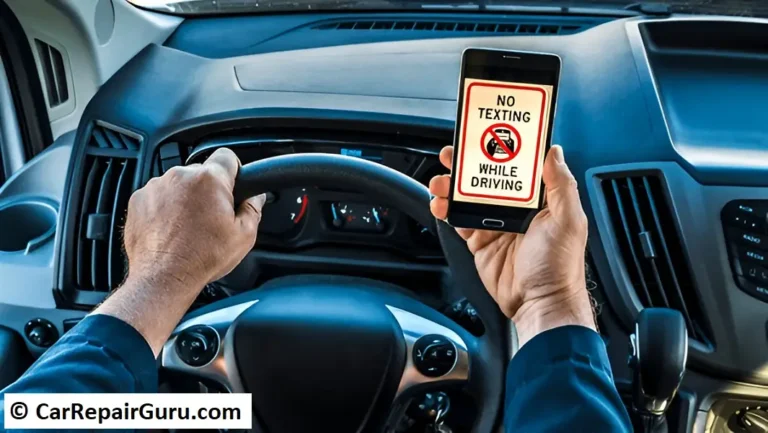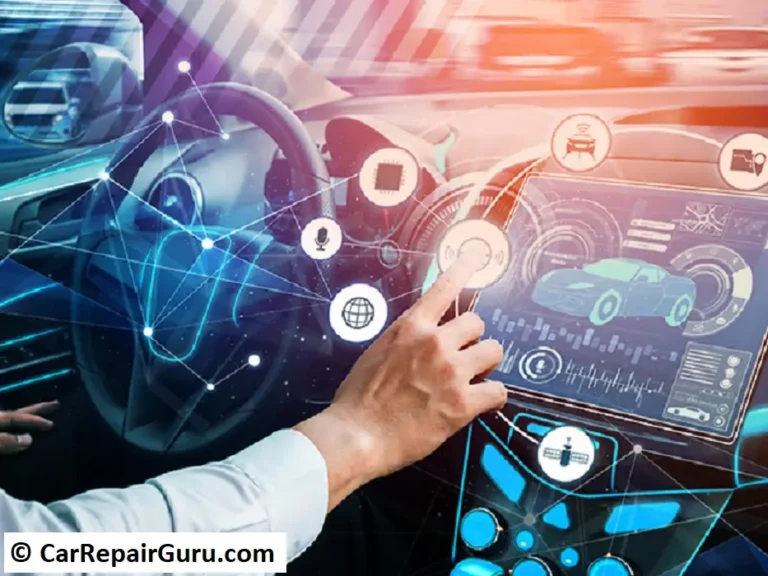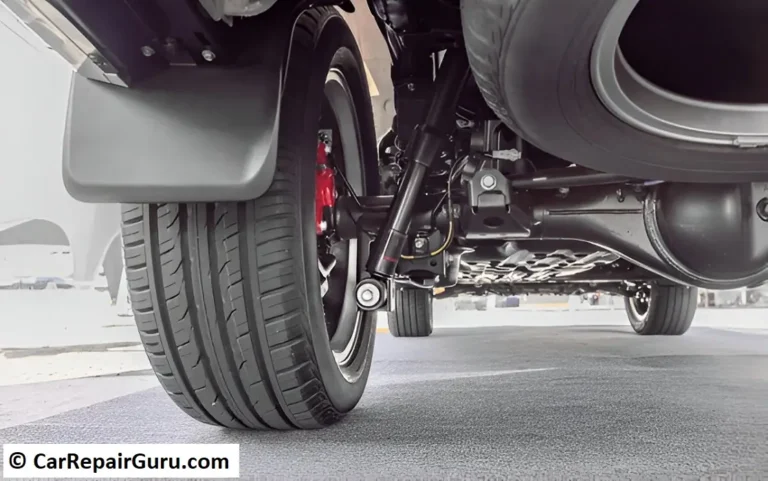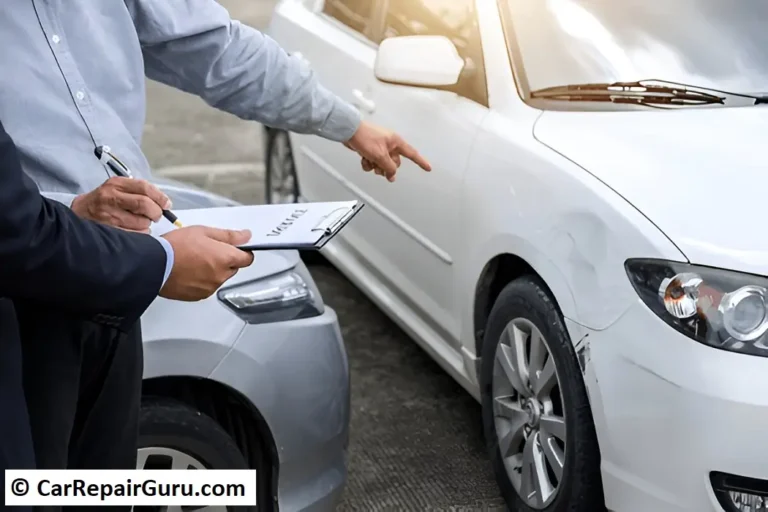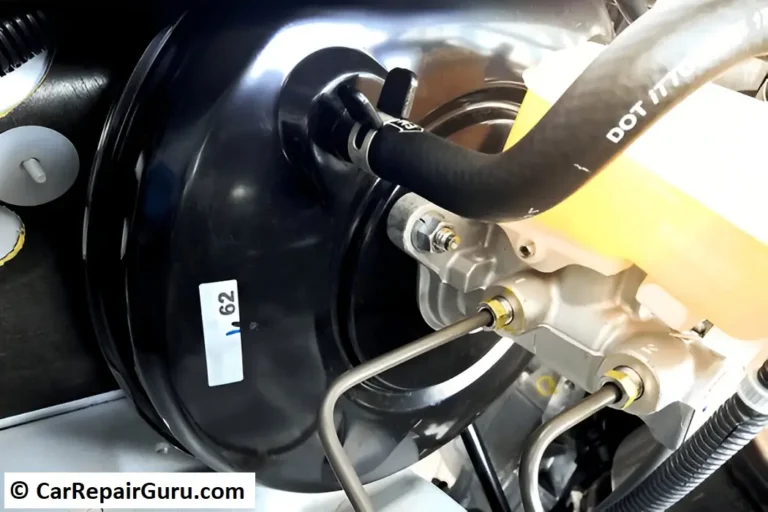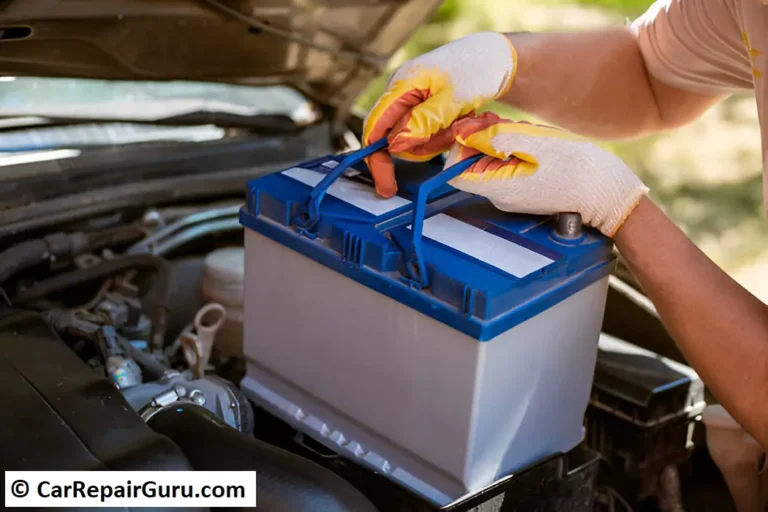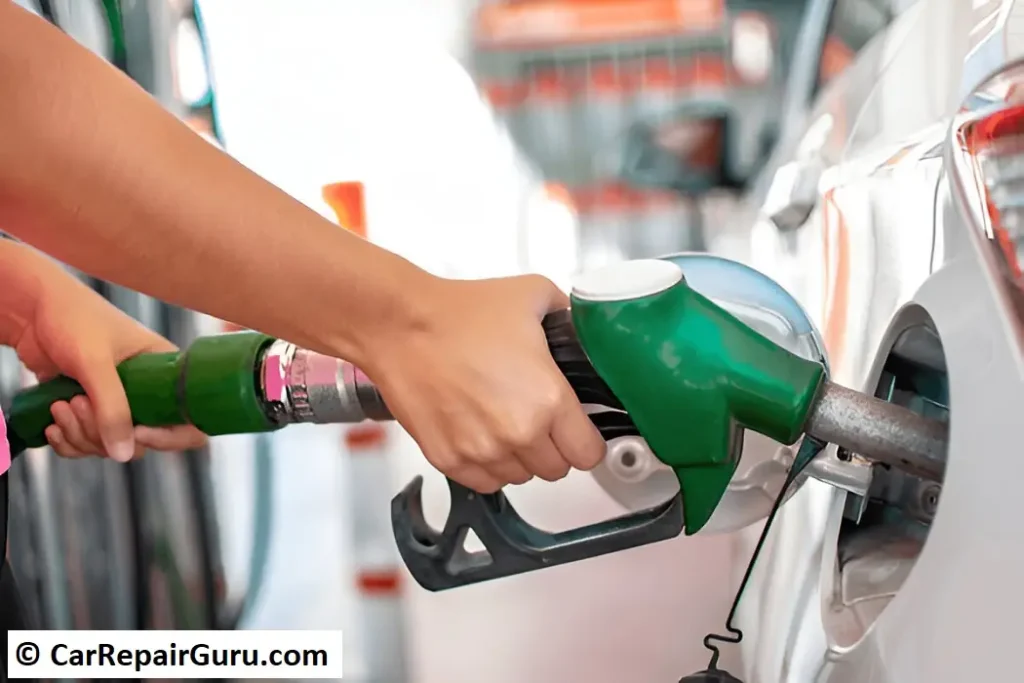
Fuel efficiency is not just a buzzword; it’s a crucial factor for car owners aiming to save money and reduce their carbon footprint. With rising fuel prices, even small changes to your driving habits and car maintenance can lead to noticeable savings. Fuel-efficient driving isn’t just about cutting costs; it’s also about contributing to a greener environment by minimizing emissions.
In this guide, you’ll discover practical tips to maximize your car’s fuel efficiency. Whether it’s adjusting your driving habits or adopting innovative technologies, these proven strategies will help you get the most out of every gallon. Let’s get started!
Driving Habits That Improve Fuel Economy
Your driving habits have a direct impact on your car’s fuel efficiency. Making a few adjustments to how you drive can significantly reduce your fuel consumption and save you money at the pump.
Accelerate and Decelerate Smoothly
Avoiding rapid acceleration and hard braking is one of the simplest yet most effective ways to conserve fuel. Sudden starts and stops force your engine to work harder, burning more fuel in the process. Instead, ease into acceleration and anticipate stops to decelerate gently. For instance, when approaching a red light, coast rather than braking abruptly. This habit not only saves fuel but also reduces wear on your brakes and tires.
Maintain Steady Speeds
Frequent changes in speed can increase fuel consumption. By maintaining a consistent speed, especially during highway driving, your car operates more efficiently. Cruise control is a great tool for this, as it helps you stay at a steady pace without unnecessary acceleration or deceleration. For example, on long road trips, setting your cruise control at the speed limit can improve fuel economy while keeping your drive stress-free.
Observe Speed Limits
Driving too fast increases aerodynamic drag, making your engine work harder to maintain higher speeds. Most cars achieve their best fuel efficiency between 50 and 60 mph. Driving faster than this range can significantly decrease your mileage. Staying within the speed limit not only ensures safety but also optimizes fuel consumption. For instance, reducing your highway speed from 70 mph to 60 mph can save a noticeable amount of fuel.
By adopting these driving habits, you can improve your car’s fuel economy, prolong its lifespan, and contribute to a cleaner environment. Small changes can lead to big savings over time!
Vehicle Maintenance Tips
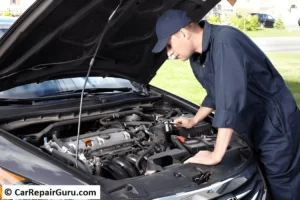
Regular vehicle maintenance is essential for ensuring your car runs efficiently and achieves optimal fuel economy. Small maintenance tasks can have a significant impact on your overall mileage and long-term savings.
Regular Engine Tune-Ups
Keeping your engine in good condition is critical for maximizing fuel efficiency. Over time, issues like dirty air filters, worn-out spark plugs, or a malfunctioning oxygen sensor can cause your car to use more fuel. Regular engine tune-ups help address these problems, ensuring your engine runs smoothly. For instance, replacing a clogged air filter can improve your fuel efficiency by up to 10%. Consult your car’s maintenance schedule and have your engine inspected by a professional mechanic to catch and fix issues early.
Keep Tires Properly Inflated
Under-inflated tires increase rolling resistance, forcing your car to use more fuel to move. Tires lose pressure over time, so it’s essential to check their inflation regularly—ideally once a month. Use a tire pressure gauge and compare your readings to the recommended pressure listed in your car’s manual or on the door frame. Properly inflated tires not only save fuel but also extend tire life and improve handling. As an example, keeping tires at their optimal pressure can boost fuel efficiency by 3%.
Use Recommended Motor Oil
The type of motor oil you use affects your engine’s performance and fuel efficiency. Using the manufacturer’s recommended oil grade reduces friction in the engine, allowing it to operate more efficiently. Avoid heavier oils unless specified, as they can cause the engine to work harder, increasing fuel consumption. Look for motor oil labeled as “energy conserving” or “fuel-saving” for added efficiency. For instance, switching to the right oil can improve your mileage by 1-2%.
By following these maintenance tips, you’ll not only save money on fuel but also enhance your car’s overall performance and longevity. A well-maintained vehicle is a more efficient vehicle, so take care of it regularly to enjoy the benefits of improved fuel economy and a smoother ride.
Reduce Vehicle Load
Carrying extra weight in your vehicle can have a noticeable impact on your fuel efficiency. By lightening your car’s load and reducing drag, you can save fuel and money.
Remove Unnecessary Weight
Every additional pound in your car requires more energy to move, which translates into higher fuel consumption. Clearing out heavy, unused items from your trunk or backseat can make a difference, especially for long drives. For instance, keeping tools, sports equipment, or other bulky items in your car when they’re not needed can reduce your fuel economy by 1-2%. Make it a habit to periodically check your car and remove anything unnecessary.
Limit Roof Rack Usage
Roof racks and cargo boxes can be convenient for transporting gear, but they also increase aerodynamic drag. This added resistance makes your car work harder to maintain speed, leading to higher fuel consumption—particularly at highway speeds. If you don’t need the roof rack, take it off to minimize drag. For example, studies show that driving with an empty roof rack can reduce fuel efficiency by as much as 8% on highways.
By reducing your vehicle’s weight and optimizing its aerodynamics, you can enhance fuel efficiency and enjoy a smoother, more cost-effective drive. Small changes lead to big savings over time!
Optimize Air Conditioning and Electrical Use
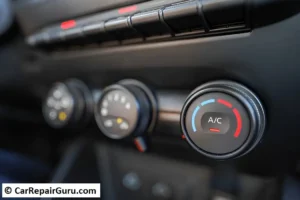
Efficient use of air conditioning and electrical features can significantly improve your car’s fuel economy. By making mindful choices, you can reduce unnecessary fuel consumption and maximize efficiency.
Use Air Conditioning Wisely
Running the air conditioning (AC) places extra load on your car’s engine, increasing fuel consumption, particularly in stop-and-go traffic. To save fuel, use the AC sparingly. For example, on mild days, consider rolling down your windows instead of turning on the AC, especially at lower speeds where aerodynamic drag is less of a concern. On hotter days, start by cooling your car with open windows before using the AC. Once the interior cools down, set the AC to a moderate temperature instead of full blast. Using your car’s recirculation mode can also help maintain cool air without overworking the system.
Minimize Electrical Accessories
Modern cars come equipped with a variety of electrical features, from heated seats to advanced infotainment systems. While these features add comfort, they also draw power from your engine, indirectly affecting fuel consumption. To conserve energy, limit the use of electrical accessories when they’re not essential. For instance, turn off heated seats once your car is warm, or unplug chargers and devices that aren’t in use.
By using air conditioning and electrical systems judiciously, you can reduce strain on your car’s engine, cut fuel costs, and drive more efficiently without sacrificing comfort. Small changes in how you manage these systems can have a big impact on your overall fuel savings.
Plan Efficient Routes
Smart route planning is an easy yet effective way to reduce fuel consumption. By optimizing your trips and avoiding delays, you can save time and money while improving fuel efficiency.
Combine Trips
Multiple short trips, especially when starting with a cold engine, consume more fuel compared to a single, longer trip. A cold engine runs less efficiently until it warms up, meaning frequent starts and stops can quickly drain your tank. To save fuel, combine errands into one trip whenever possible. For example, instead of making separate trips to the grocery store, post office, and gym, plan a route that allows you to complete all errands in one outing. Not only will this save fuel, but it will also reduce wear and tear on your car.
Avoid Traffic Congestion
Sitting in traffic wastes fuel, especially during stop-and-go conditions. Using navigation apps like Google Maps or Waze can help you identify the quickest and most efficient routes, steering you away from traffic jams and construction zones. Many apps also provide real-time updates on delays, allowing you to adjust your route on the fly. For instance, taking an alternative side street instead of waiting in a long line of cars can save both time and gas.
By planning your routes wisely, you’ll optimize your fuel economy, spend less time on the road, and enjoy a smoother driving experience.
Consider Vehicle Modifications
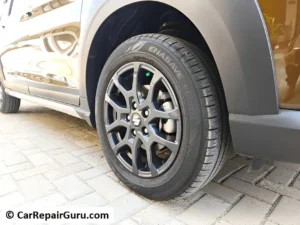
Making thoughtful modifications to your vehicle can help you achieve better fuel efficiency. Simple upgrades and tools can optimize performance, reduce friction, and help you adopt fuel-saving driving habits.
Install a Fuel Economy Monitor
A fuel economy monitor provides real-time data on your car’s fuel consumption and driving habits. These devices connect to your vehicle’s onboard diagnostic system and display helpful insights, such as how much fuel you’re using at various speeds, during acceleration, or when idling. By understanding how your driving behaviors impact fuel consumption, you can make adjustments, like smoother acceleration or maintaining steady speeds, to save fuel. For example, a driver using a fuel monitor might notice that coasting to a stoplight instead of braking hard improves mileage. Over time, the data can encourage more efficient habits, translating into substantial savings.
Use Low Rolling Resistance Tires
Low rolling resistance (LRR) tires are designed to reduce the energy required to keep your car moving. These tires achieve this by minimizing friction with the road surface, which helps your engine work more efficiently. For instance, switching to LRR tires can improve fuel economy by 2-3% compared to standard tires. Additionally, these tires maintain excellent safety and performance, making them a worthwhile investment for long-term savings. When shopping for LRR tires, look for models certified by industry standards for fuel efficiency and durability.
By installing a fuel economy monitor and investing in low rolling resistance tires, you can take proactive steps to enhance your car’s fuel efficiency. These modifications not only save money at the pump but also contribute to a more environmentally friendly driving experience. Small upgrades today can lead to significant benefits down the road.
Adopt Fuel-Saving Technologies
Incorporating modern fuel-saving technologies into your vehicle can make a significant difference in your overall fuel efficiency. These advancements help reduce unnecessary fuel consumption and offer environmentally friendly solutions.
Utilize Start-Stop Systems
Start-stop systems are designed to automatically turn off your car’s engine when idle, such as at traffic lights or in heavy traffic, and restart it when you press the accelerator. This feature minimizes fuel wasted during idling, which can account for a considerable portion of fuel use, especially in urban driving conditions. For instance, using a start-stop system in a busy city can save 5-10% of fuel, depending on how often you encounter stops. Many newer vehicles come with this feature standard, but aftermarket kits are also available for older models.
Explore Hybrid or Electric Vehicles
If you’re considering a new vehicle, hybrid and electric models are excellent choices for maximizing fuel economy and reducing environmental impact. Hybrids combine an internal combustion engine with an electric motor, allowing them to achieve superior mileage compared to traditional vehicles. Fully electric vehicles (EVs), on the other hand, eliminate fuel consumption altogether by relying solely on electricity. For example, hybrid cars like the Toyota Prius or EVs like the Tesla Model 3 offer exceptional efficiency, often doubling or tripling the mileage of conventional cars.
By adopting these technologies, you can significantly reduce fuel costs, minimize emissions, and contribute to a more sustainable future. Whether upgrading your car or exploring newer models, these innovations make fuel-efficient driving more accessible than ever.
Stay Informed About Fuel Prices and Quality
Keeping track of fuel prices and choosing quality fuel can help you save money and improve your vehicle’s performance. These simple habits ensure you get the most out of every gallon.
Monitor Fuel Prices
Fuel prices can vary significantly between stations, even within the same city. Using apps like GasBuddy, Waze, or Google Maps can help you locate the cheapest fuel options nearby. These apps provide real-time updates on prices, ensuring you don’t overpay at the pump. For example, planning your route to include a station with lower prices can save you several dollars on a full tank. Additionally, consider loyalty programs offered by certain gas stations, which can further reduce costs over time.
Choose Quality Fuel
Not all fuel is created equal. Using high-quality gasoline from reputable brands can enhance engine performance and efficiency. Quality fuels often contain additives that clean and protect your engine, helping it run more smoothly and reducing wear over time. Avoid cutting costs by opting for lower-grade fuel than recommended for your vehicle, as this can decrease efficiency and potentially cause long-term damage. Check your owner’s manual to determine the best fuel type for your car, and stick to it for optimal results.
By staying informed about fuel prices and choosing quality options, you’ll save money and keep your car running at its best.
Conclusion
Improving your car’s fuel economy isn’t just about saving money—it’s also a step toward more sustainable and efficient driving. By adopting smarter driving habits, such as accelerating smoothly and maintaining steady speeds, you reduce fuel consumption while enhancing your vehicle’s performance. Regular maintenance, including engine tune-ups and proper tire inflation, keeps your car running efficiently, while mindful use of air conditioning and electrical features further cuts unnecessary fuel use.
Vehicle modifications like fuel economy monitors and low rolling resistance tires, along with the adoption of fuel-saving technologies, provide modern solutions for reducing costs and environmental impact. Additionally, staying informed about fuel prices and quality ensures you get the best value at the pump.
Each of these strategies contributes to a cleaner environment, longer-lasting vehicles, and significant savings. By implementing these tips, you’re not just improving fuel efficiency—you’re driving smarter for a better future.
car’s fuel efficiency (FAQs)
How can I improve my car’s fuel efficiency?
Adopt smooth driving habits, maintain your vehicle regularly, reduce excess weight, and plan efficient routes to enhance fuel economy.
Does using air conditioning affect fuel consumption?
Yes, excessive use of air conditioning can increase fuel consumption. Use it wisely, especially at lower speeds or in mild weather, to conserve fuel.
What maintenance practices help in improving fuel efficiency?
Regular engine tune-ups, keeping tires properly inflated, and using the manufacturer-recommended motor oil can significantly improve fuel economy and vehicle performance.
Do roof racks impact fuel efficiency?
Yes, roof racks increase aerodynamic drag, especially at higher speeds, leading to reduced fuel efficiency. Remove roof racks and cargo boxes when not in use to optimize mileage.
Can vehicle modifications enhance fuel economy?
Absolutely. Installing a fuel economy monitor, using low rolling resistance tires, or upgrading to more fuel-efficient technology, like start-stop systems, can all contribute to improved fuel efficiency.
